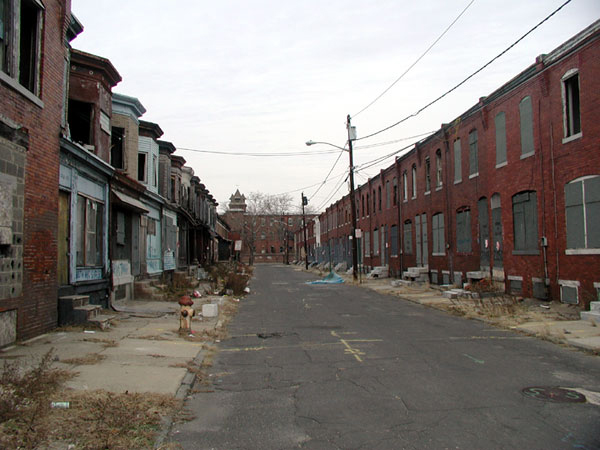| << Chapter < Page | Chapter >> Page > |
Developed by researchers at the University of Chicago in the 1920s and 1930s, social disorganization theory asserts that crime is most likely to occur in communities with weak social ties and the absence of social control. An individual who grows up in a poor neighborhood with high rates of drug use, violence, teenage delinquency, and deprived parenting is more likely to become a criminal than an individual from a wealthy neighborhood with a good school system and families who are involved positively in the community.

Social disorganization theory points to broad social factors as the cause of deviance. A person isn’t born a criminal but becomes one over time, often based on factors in his or her social environment. Research into social disorganization theory can greatly influence public policy. For instance, studies have found that children from disadvantaged communities who attend preschool programs that teach basic social skills are significantly less likely to engage in criminal activity.
Cultural deviance theory suggests that conformity to the prevailing cultural norms of lower-class society causes crime. Researchers Clifford Shaw and Henry McKay (1942) studied crime patterns in Chicago in the early 1900s. They found that violence and crime were at their worst in the middle of the city and gradually decreased the farther someone traveled from the urban center toward the suburbs. Shaw and McKay noticed that this pattern matched the migration patterns of Chicago citizens. New immigrants, many of them poor and lacking knowledge of the English language, lived in neighborhoods inside the city. As the urban population expanded, wealthier people moved to the suburbs and left behind the less privileged.
Shaw and McKay concluded that socioeconomic status correlated to race and ethnicity resulted in a higher crime rate. The mix of cultures and values created a smaller society with different ideas of deviance, and those values and ideas were transferred from generation to generation.
The theory of Shaw and McKay has been further tested and expounded upon by Robert Sampson and Byron Groves (1989). They found that poverty, ethnic diversity, and family disruption in given localities had a strong positive correlation with social disorganization. They also determined that social disorganization was, in turn, associated with high rates of crime and delinquency—or deviance. Recent studies Sampson conducted with Lydia Bean (2006) revealed similar findings. High rates of poverty and single-parent homes correlated with high rates of juvenile violence.
Conflict theory looks to social and economic factors as the causes of crime and deviance. Unlike functionalists, conflict theorists don’t see these factors as positive functions of society. They see them as evidence of inequality in the system. They also challenge social disorganization theory and control theory and argue that both ignore racial and socioeconomic issues and oversimplify social trends (Akers 1991). Conflict theorists also look for answers to the correlation of gender and race with wealth and crime.

Notification Switch
Would you like to follow the 'Introduction to sociology 2e' conversation and receive update notifications?